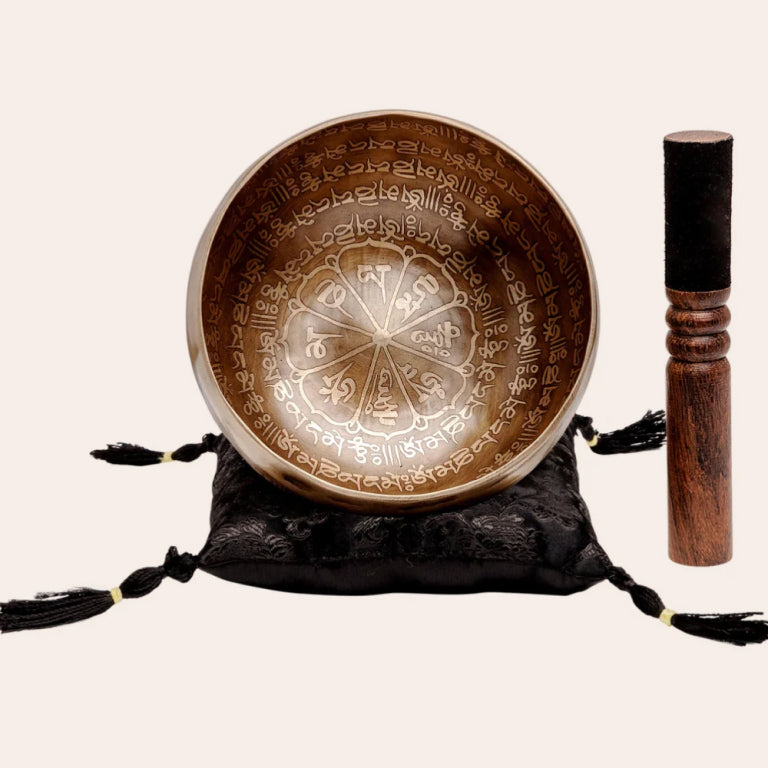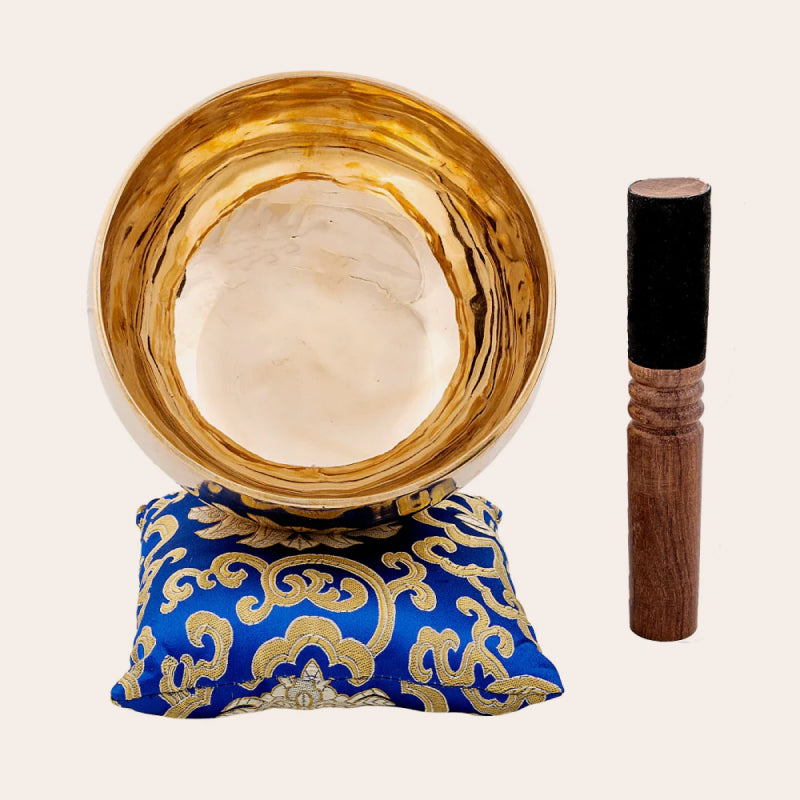"I crave the low, deep sounds."
People are often drawn to the deep, resonant sounds. The hum of a bass guitar, the rumbling of thunder far off in the distance on a summer night...These sounds evoke a profound sense of calm -- a deep chill.
In this article, we explore why humans are attracted to such deep sounds from an ancestral and biological perspective. It explains what happens in the brain and body when we hear these sounds and concludes with a discussion on the appeal of large Tibetan singing bowls, which produce some of the deepest, most resonant tones.
Ancestral Attraction to Deep Sounds
Humans evolved in environments rich with the deep, resonant sounds of nature—rolling thunder, flowing rivers, and the distant call of large animals. These low-frequency sounds became associated with safety and comfort for several reasons:
-
Natural Calm:
- The steady, rhythmic sounds of nature, such as the rustling of leaves or the flow of a stream, signaled a calm and safe environment. These sounds often indicated that there were no immediate threats nearby, allowing our ancestors to relax and feel secure.
-
Communication and Community:
- Low-frequency sounds travel farther than high-frequency sounds. This made them ideal for communication across distances. The deep tones of drums and other instruments were used in rituals and gatherings, reinforcing a sense of community and belonging.
Biological and Psychological Responses
When we hear deep, resonant sounds, several biological and psychological processes are triggered:
-
Auditory Processing:
- Low-frequency sounds stimulate the apex of the cochlea, a spiral-shaped organ in the inner ear. These hair cells send signals to areas of the brain linked with emotion and memory, creating a calming and soothing effect.
-
Brainwave Entrainment:
- Deep sounds can influence brainwave activity. Frequencies in the range of 4-8 Hz (Theta waves) are associated with deep relaxation, meditation, and the early stages of sleep. Listening to resonant low-frequency sounds can help the brain synchronize to these calming rhythms, enhancing relaxation and focus.
-
Vagal Nerve Stimulation:
- The vagus nerve, which runs from the brainstem to the abdomen, plays a crucial role in regulating the body's stress response. Deep, resonant sounds can stimulate the vagus nerve, promoting relaxation and reducing stress by shifting the body into a parasympathetic state, which is associated with rest and digestion.
-
Hormonal Effects:
- Exposure to soothing low-frequency sounds can trigger the release of endorphins and reduce levels of cortisol, the stress hormone. This hormonal shift leads to feelings of well-being and calm.
Psychological and Emotional Impact
The deep resonance of low-frequency sounds has a powerful psychological impact:
-
Sense of Safety and Calm:
- Deep sounds often evoke a sense of safety and calm. This response is likely rooted in the ancestral association of low, rhythmic sounds with safe and familiar environments.
-
Emotional Release:
- The vibrations of deep sounds resonate with the body's tissues, promoting physical relaxation and emotional release. This can help reduce tension and stress, leading to a state of tranquility.
-
Enhanced Meditation:
- Low-frequency sounds aid in achieving meditative states. The steady, grounding nature of these sounds helps focus the mind and enhance mindfulness practices, making it easier to achieve a deep state of meditation.
The Appeal of Large Tibetan Singing Bowls
Large Tibetan singing bowls, particularly those in the 1st or 2nd octave, produce exceptionally deep and resonant tones. These bowls, often made of bronze, are designed to create powerful vibrations when played.
-
Creating Resonance:
- When struck or rimmed with a mallet, large singing bowls produce deep, resonant tones that can fill a space and be felt physically throughout the body. This resonance is not just heard but also felt, providing a tactile experience that enhances the auditory one.
-
Therapeutic Benefits:
- The vibrations from these bowls penetrate deep into the body’s tissues, promoting relaxation and potentially aiding in pain relief. The deep tones can help slow the heart rate, lower blood pressure, and reduce stress.
-
Meditative Aid:
- The consistent, deep sounds of large singing bowls make them ideal for meditation. They help maintain focus and create a serene environment conducive to deep meditation and introspection.
-
Energy Healing:
- In many traditional practices, the deep vibrations of large singing bowls are used to balance the body’s energy centers, or chakras. The sound waves help clear blockages and promote the free flow of energy, enhancing physical and emotional well-being. These bowls are often so large that one can stand inside of them, and transmit the vibrations all the way through the body.
Conclusion
Humans' attraction to deep, resonant sounds is deeply rooted in our biology and ancestral experiences -- and in our anecdotal experience here at The Ohm Store, people always want to know which bowls are the biggest generators of deep, low tones!










